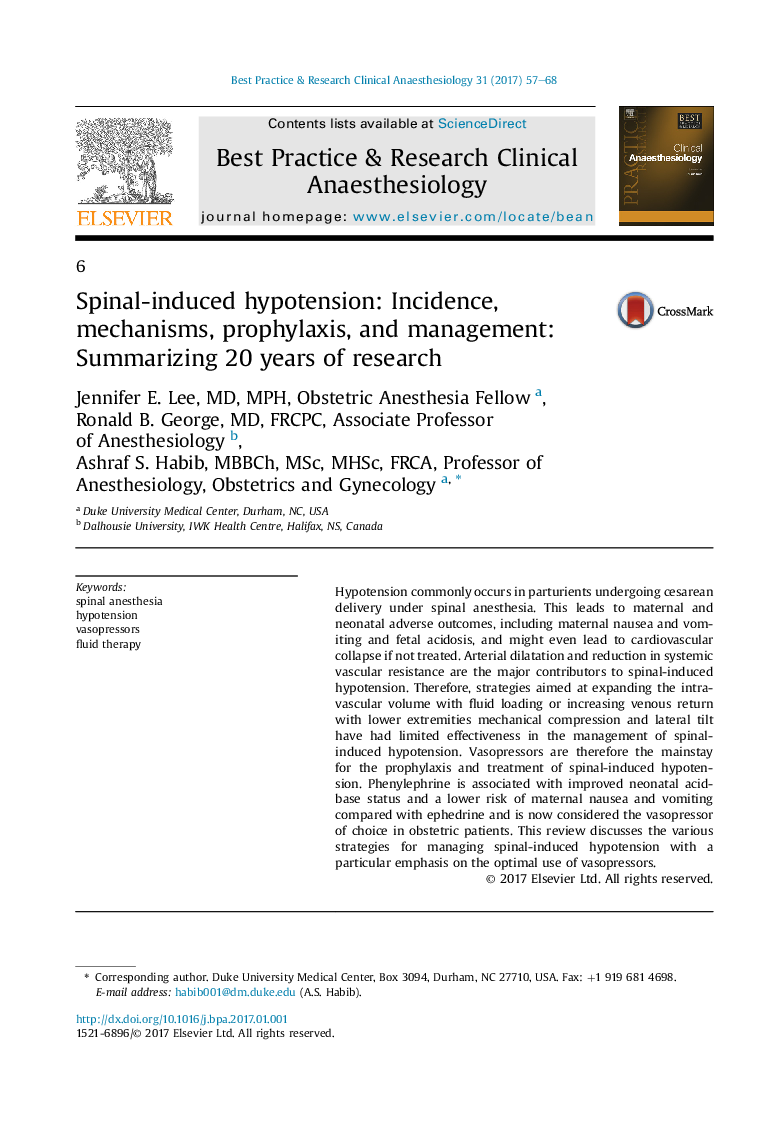| Article ID | Journal | Published Year | Pages | File Type |
|---|---|---|---|---|
| 5580606 | Best Practice & Research Clinical Anaesthesiology | 2017 | 12 Pages |
Abstract
Hypotension commonly occurs in parturients undergoing cesarean delivery under spinal anesthesia. This leads to maternal and neonatal adverse outcomes, including maternal nausea and vomiting and fetal acidosis, and might even lead to cardiovascular collapse if not treated. Arterial dilatation and reduction in systemic vascular resistance are the major contributors to spinal-induced hypotension. Therefore, strategies aimed at expanding the intravascular volume with fluid loading or increasing venous return with lower extremities mechanical compression and lateral tilt have had limited effectiveness in the management of spinal-induced hypotension. Vasopressors are therefore the mainstay for the prophylaxis and treatment of spinal-induced hypotension. Phenylephrine is associated with improved neonatal acid-base status and a lower risk of maternal nausea and vomiting compared with ephedrine and is now considered the vasopressor of choice in obstetric patients. This review discusses the various strategies for managing spinal-induced hypotension with a particular emphasis on the optimal use of vasopressors.
Related Topics
Health Sciences
Medicine and Dentistry
Anesthesiology and Pain Medicine
Authors
Jennifer E. (Obstetric Anesthesia Fellow), Ronald B. (Associate Professor of Anesthesiology), Ashraf S. (Professor of Anesthesiology, Obstetrics and Gynecology),
